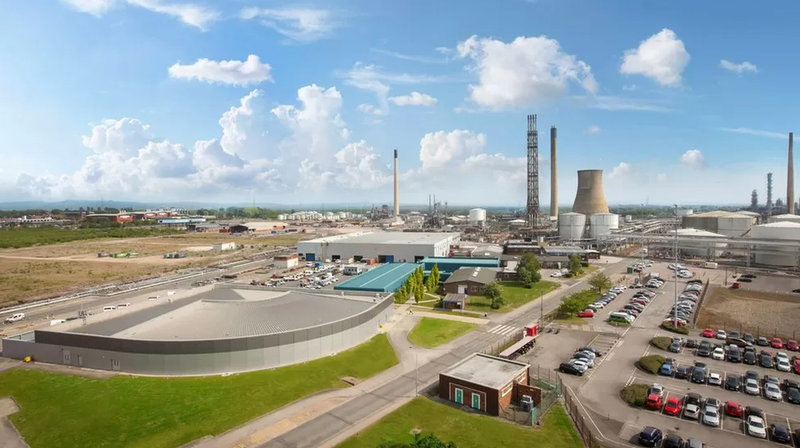Regional
New report highlights potential of Northern Gateways in the UK
A new report from TfN outlines how maximising Northern airports will help realise the region's full economic potential. Peter Nilson breaks down the details.
Image: copyright
Transport for the North (TfN) has published a new report that highlights the potential of northern gateways to boost the region’s economy.
The International Connectivity and Aviation policy paper calls for a maximising of the full potential of ports and airports in the North of England, categorising it as essential to growing the North’s economy.
The policy paper follows TfN’s previous policy on International Connectivity which highlighted the importance of aviation and shipping in closing the productivity gap with other parts of the UK.
The new paper repositions TfNs policies in light of the Covid-19 pandemic and the subsequent transformation of the aviation landscape.
Northern airports’ potential for growth
The previous report identified the importance of international connectivity for the North, with the region’s airports handling 40 million air passengers in 2016 and contributing £5.5bn to the North’s gross added value. More recent figures show that in 2019, there were 3.99 million visits to the North by international visitors, with a total expenditure of £1.99bn.
However, this context has evolved further following the impacts of the Covid-19 pandemic and Brexit, as well as the shift towards net-zero and decarbonisation.
The 2017 report highlighted that if global connectivity is supported, the latent capacity at the North’s key airports and ports can deliver an additional 60 million passengers per annum.
Passenger numbers at Northern airports in 2019 according to the UK Civil Aviation Authority Annual airport data 2020
Airports in the North serve a range of destinations, both domestic and international, with Manchester Airport being the busiest outside of London. Manchester is well-connected by low-cost carriers serving Europe, as well as various long haul operators serving locations including America, the Middle East and Asia.
Low-cost operators also operate services to Europe from airports such as Newcastle, Liverpool, and Leeds Bradford. Several of the North’s airports also provide domestic connectivity such as to Belfast, London, and the South West; as well as to service offshore energy infrastructure in both the North Sea and the Irish Sea.
Aviation growth and environmental considerations
The 2017 report did not acknowledge the challenges of increased aviation emissions associated with the growth in international connectivity in detail, as well as the innovative technologies that are being developed to overcome these
challenges.
TfN has ambitions to position the North as a leader and centre of excellence for the development of zero-emission aircraft, with opportunities in Teesside to facilitate zero-emission aircraft demonstrations with the Tees Valley Hydrogen Hub.
In line with the UK Government’s Jet Zero programme to deliver net-zero and zero-emission aviation, the new TfN report highlights UK production facilities for sustainable aviation fuels (SAF) in the North, such as Immingham and Ellesmere Port. The report goes on to stress the importance of building on these projects, such as Manchester Airport developing a new direct supply for SAF from Ellesmere Port, or British Airways’ procurement of SAF derived from the Humber region.

Stanlow Oil Refinery in Ellesmere Port will convert non-recyclable household waste into SAF for airlines. Credit: Essar
The report also highlights the commitment of several airports to net-zero emissions, including both Manchester Airport and Newcastle International committing to net-zero airport operations (excluding flights), by 2038 and 2035 respectively.
There is an opportunity, according to TfN, for the region to be “an early-mover” in supporting aviation decarbonisation and to capitalise on the significant regional economic growth opportunities presented by developing zero-emission aircraft, producing and commercialising SAF, developing liquified green hydrogen fuel, and improving low-carbon surface transport connections for airports.
The North can also play a key role in reaching net-zero aviation by 2050, due to the region’s proximity to sources of renewable energy and by promoting northern airports as liquid hydrogen ‘feeder’ locations and subsequently developing a supply and distribution network.
Transport connectivity at airports is vital
Airports with good public transport links see a greater proportion of passengers choosing to use trains, light rail, coaches and buses in preference to cars. According to an Atkins study, connectivity is a constraint to growth, not just impacting airport users but also airport staff.
TfN recognises the need for an increased focus on surface access becoming zero emission. Improving access to transport across all communities has the potential to make low-carbon surface access more accessible and efficient for access to airports and across the North.
“The evidence is clear: poor transport infrastructure and services are holding back the North’s economic potential. Investing in improving infrastructure will enable growth, improve access to jobs, and ensure the North is a great place to live and invest,” Martin Tugwell, TfN CEO, said in the release of the report.
“Maximising the use of our existing ports and airports will realise the North’s potential, whilst helping provide relief to gateways in the over-congested South. This includes making use of the potential of its airports and ports to deliver more direct international connections.”
Poor transport infrastructure and services are holding back the North’s economic potential.
In the report, TfN recognises “the importance of integrated multi-modal connectivity to allow seamless journeys, particularly for domestic trips within the UK”.
Future strategic infrastructure investment in nationally significant schemes, such as HS2 and Northern Powerhouse Rail (NPR) is vital to enhance the UK’s domestic connectivity and support low-carbon travel.
Through realising this potential, the North and wider UK can also capitalise on existing high-speed rail links via the Channel Tunnel. This will support an integrated and efficient high-speed network that will link the North via HS2 to mainland Europe, providing alternative connectivity in some instances to aviation for passengers and freight; alleviating capacity restraints at airports.
“To build a well-connected North we need to do more than just improve travel within the region,” according to Tugwell. “We also need to ensure that the North has first-class international connections.”